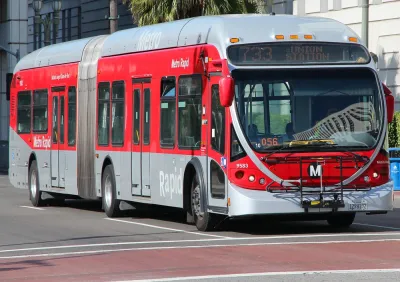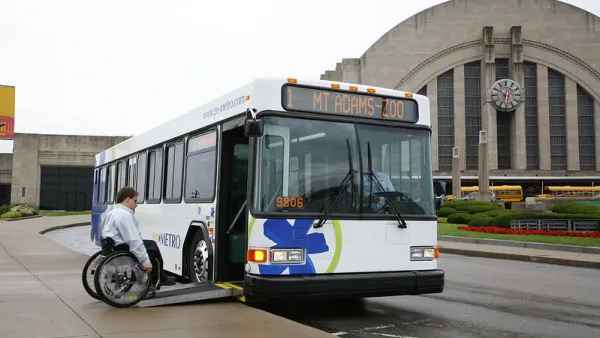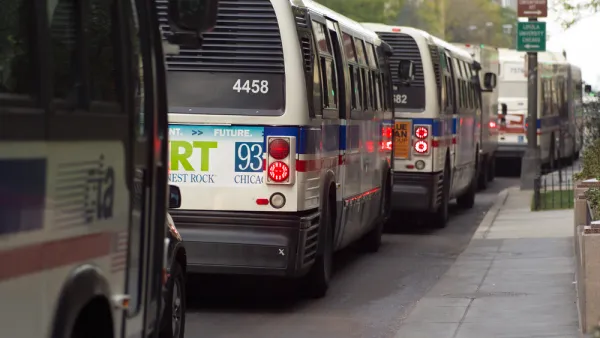Even before the effects fo the coronavirus pandemic drastically reduced ridership, transit riders were declining in cities across the country. The reasons for the downward trend were varied.

Bus ridership started to drop in 2013 in many U.S. cities of all sizes and with different kinds of transit systems. "By late 2019, through nearly seven straight years of decline, national bus ridership in America was at its lowest level since the mid-1970s, a trend that has left service already weakened as transit agencies brace for a public health crisis," write Emily Badger and Quoctrung Bui.
This trend is the result of a variety of factors, say Badger and Bui, including the rise of alternative transportation modes, demographic shifts, and changes in work and commute patterns.
Some factors are under the control of transit agencies—service and infrastructure expansions or cuts, for example. But other factors are related to broader social and economic trends that affect bus ridership over the long term, such as suburbanization, online commerce, and immigration.
"Agencies [also] don’t control all the infrastructure and subsidies that help transit’s biggest competitor, the car. Past research has suggested that transit riders are even more sensitive to changes in gas prices than they are to changes in transit fares. Recently gas has been cheap, and interest rates on auto loans low," note Badger and Bui.
FULL STORY: The Mystery of the Missing Bus Riders

Analysis: Cybertruck Fatality Rate Far Exceeds That of Ford Pinto
The Tesla Cybertruck was recalled seven times last year.

National Parks Layoffs Will Cause Communities to Lose Billions
Thousands of essential park workers were laid off this week, just before the busy spring break season.

Retro-silient?: America’s First “Eco-burb,” The Woodlands Turns 50
A master-planned community north of Houston offers lessons on green infrastructure and resilient design, but falls short of its founder’s lofty affordability and walkability goals.

Test News Post 1
This is a summary

Analysis: Cybertruck Fatality Rate Far Exceeds That of Ford Pinto
The Tesla Cybertruck was recalled seven times last year.

Test News Headline 46
Test for the image on the front page.
Urban Design for Planners 1: Software Tools
This six-course series explores essential urban design concepts using open source software and equips planners with the tools they need to participate fully in the urban design process.
Planning for Universal Design
Learn the tools for implementing Universal Design in planning regulations.
EMC Planning Group, Inc.
Planetizen
Planetizen
Mpact (formerly Rail~Volution)
Great Falls Development Authority, Inc.
HUDs Office of Policy Development and Research
NYU Wagner Graduate School of Public Service




























